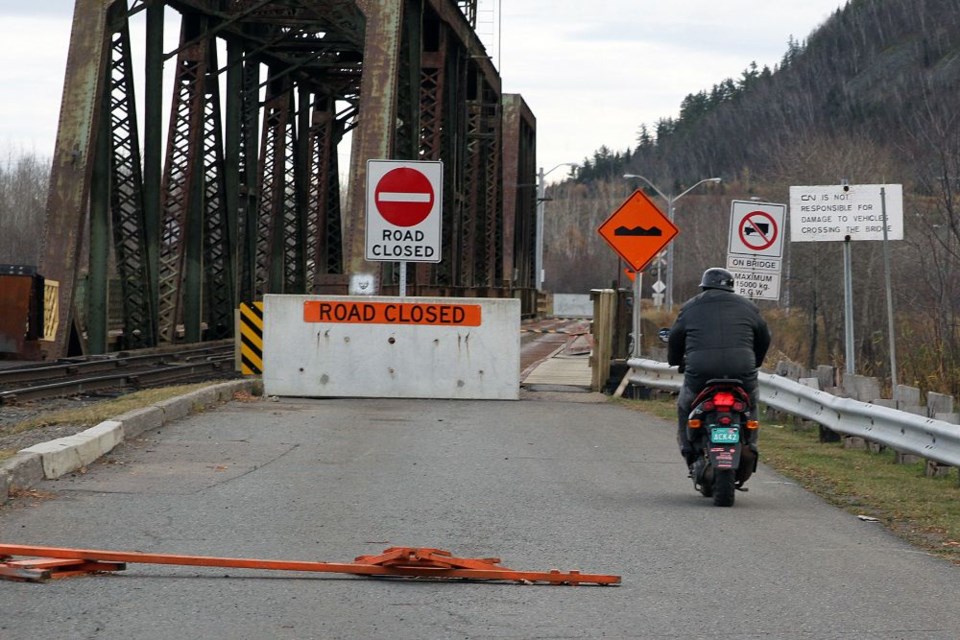THUNDER BAY – It has been 725 days since vehicular traffic was last able to cross the James Street Swing Bridge.
But the potentially long legal battle to decide the future of the bridge is likely just beginning.
Representatives for the City of Thunder Bay and CN Rail appeared in court at the Thunder Bay Courthouse on Friday, where city lawyers are moving to have CN’s action against them dismissed and instead proceed forward with the city’s application process.
The legal dispute stems from the ongoing closure of the bridge, which has been closed to vehicular traffic since an Oct. 29, 2013 fire. The span is a particularly vital connection for the Fort William First Nation, as it provides direct access to the city across the Kaministiquia River rather than an 11-kilometre detour along Highway 61.
City lawyer Chris Matthews argued the case is relatively simple and hinges on the original 1905 and 1906 agreements between the Grand Trunk Pacific Railway Company and the Municipal Corporation of the Town of Fort William, now CN and Thunder Bay respectively.
The 1906 contract stated the railway “will maintain the bridge in perpetuity without cost to the town” and “that the space allowed for town traffic on each side of the bridge, be sufficient to accommodate street car, vehicular traffic and separate passage for foot passengers.”
Matthews argued the current condition of the bridge is irrelevant, as is how much CN has historically spent to maintain the structure.
The question is whether the agreements compel the railway to repair and reopen the bridge, giving city traffic the right to cross.
The city is also seeking a court order to allow their own inspectors to examine the bridge.
He also claimed there are no material facts at dispute, which should prompt the case to a more streamlined and expeditious application process rather than a civil trial.
But CN lawyer Guy Pratte said there are a number of reasons the case should at least for now proceed in the direction of a civil trial.
The focus of the railway’s case is on the definition of maintenance in the original contract, and whether that means there is an obligation on CN to completely replace the bridge if the damage is too severe to be repaired.
Pratte also asserted there is a case to be made there are actually two distinctly different bridges. Even though they are connected, the rail structure and roadway section are constructed with different materials and have much different load supporting capacities.
He told the court many components of the road portion do not meet current standards and pose a significant safety risk for vehicles, pedestrians and cyclists.
Granting the city’s request would also result in the case bypassing the discovery phase, where both sides would be compelled to share all relevant data and information. The application process would allow each party to select which evidence they turn over.
The legal battle has been underway for the past eight months after more than a year of trying to work out a solution.
The two parties, along with Fort William First Nation, had discussions about potential solutions to reopen the bridge following the fire until this past February. At that point talks broke down and the city informed the railway they intended to bring the matter to court.
CN submitted multiple proposals to Thunder Bay city council, which were all rejected. The last one involved reopening the bridge with vehicles sharing the rail bed.
The bridge reopened to rail traffic three days after the fire. It is unknown if the cause of the blaze has been determined.
There was no word when Superior Justice John Fregeau will return with a decision.
